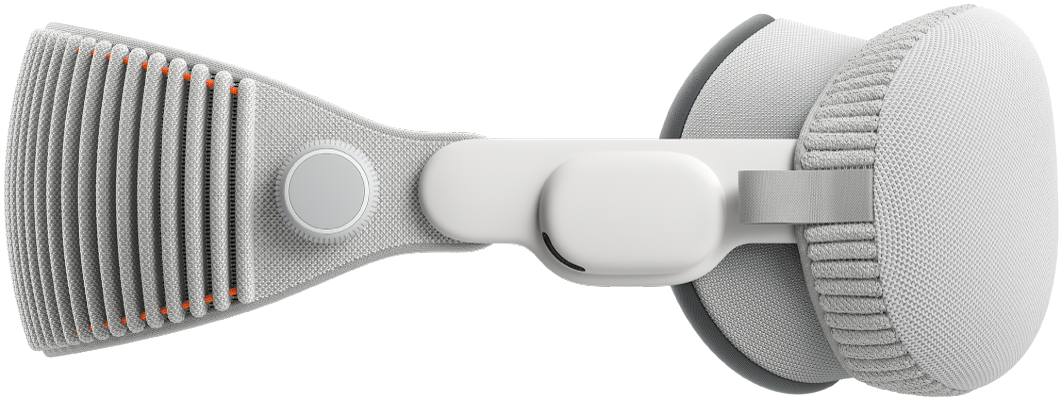Navigating the Ever-Expanding Apple Universe
The Apple ecosystem is a dynamic and constantly evolving landscape. For developers, tech enthusiasts, and everyday users, keeping pace with the relentless stream of updates, new hardware, and software paradigms can be a formidable challenge. From the groundbreaking launch of a new computing platform to the subtle yet critical security patches in iOS, every piece of Apple ecosystem news contributes to a larger narrative of integration, privacy, and user experience. This isn’t just about individual product announcements; it’s about understanding how the iPhone in your pocket, the Watch on your wrist, and the new spatial computer on your face work in concert to create a seamless, powerful, and deeply personal technological environment. This article provides a comprehensive analysis of the latest developments across Apple’s hardware and software, offering in-depth insights, practical examples, and a forward-looking perspective on where this interconnected world is headed.
Section 1: The Shifting Hardware Landscape: From Wearables to Spatial Computing
While the iPhone remains the gravitational center of Apple’s universe, the most significant recent shifts have occurred at the periphery. The introduction of new product categories and the maturation of existing ones are redefining what’s possible within the ecosystem. The focus is shifting from single-device functionality to multi-device, ambient experiences.
Apple Vision Pro: The Dawn of a New Era
Undoubtedly, the most transformative piece of Apple Vision Pro news is its very existence and launch. This is not merely a VR headset; Apple is positioning it as the first “spatial computer,” a device that blends digital content with the physical world. For developers, this represents both a monumental opportunity and a steep learning curve. The hardware itself is a marvel of engineering, boasting dual micro-OLED displays with more pixels than a 4K TV for each eye, an advanced eye-tracking system for navigation, and a powerful M2/R1 chip combination to process data with minimal latency. Early Vision Pro accessories news points to a growing market for custom prescription lenses, travel cases, and developer-focused tools. There are even whispers of a potential Vision Pro wand or other physical controllers for specific gaming and professional applications, though Apple’s primary focus remains on hand-and-eye tracking for navigation.
Wearables and Hearables: The Dominance Continues
Long before spatial computing, Apple solidified its dominance in personal tech with wearables. The latest Apple Watch news continues to center on health and wellness. With advanced sensors for blood oxygen, ECG, and temperature sensing, the device has evolved from a simple notification hub into a sophisticated health monitor. Recent software updates have introduced features for mental health logging and advanced workout tracking, making the latest Apple health news a key driver of upgrades. In the audio space, AirPods news highlights the power of software to enhance hardware. Features like Adaptive Audio, which intelligently blends Transparency Mode and Active Noise Cancellation, demonstrate Apple’s commitment to seamless user experiences. The latest AirPods Pro news focuses on refinements to sound quality and conversational awareness, while AirPods Max news continues to cater to the high-fidelity audio market, solidifying Apple’s multi-tiered audio strategy.
The Core Lineup: iPhone, iPad, and Mac
The foundational products continue to see meaningful iteration. Recent iPhone news has focused on camera system advancements and the adoption of USB-C, a significant change that improves interoperability. Similarly, iPad news revolves around the device’s identity, with iPadOS updates aiming to bridge the gap between tablet simplicity and laptop capability. The synergy with peripherals like the Apple Pencil remains a key selling point, and the latest Apple Pencil news often hints at new gestures and lower latency, further enhancing its utility for artists and students.

Section 2: Software at the Core: iOS, visionOS, and the Power of Integration
Hardware sets the stage, but software directs the play. Apple’s true strength lies in the deep integration between its operating systems, which creates a user experience that is difficult for competitors to replicate. This software fabric is constantly being reinforced with new features, security protocols, and developer frameworks.
iOS Updates, Privacy, and Security
The annual cycle of iOS updates news brings headline features like customizable lock screens and interactive widgets, but the most critical work often happens under the hood. A constant stream of iOS security news reveals Apple’s ongoing battle against emerging threats. Features like Lockdown Mode and Advanced Data Protection are testaments to this commitment. The cornerstone of this is a philosophy of privacy by design. Crucial Apple privacy news, such as the rollout of App Tracking Transparency, has fundamentally reshaped the mobile advertising industry and reinforced user trust. For users, best practices include enabling automatic updates, using strong passcodes with Face ID or Touch ID, and regularly reviewing app permissions to ensure their data remains secure.
The Rise of visionOS
visionOS is the software heart of the Apple Vision Pro. Built on the foundation of macOS, iOS, and iPadOS, it introduces a new three-dimensional user interface controlled entirely by a user’s eyes, hands, and voice. For developers, this means rethinking app design from the ground up. A common pitfall is simply porting a 2D iOS app into a floating window in 3D space. The most successful visionOS apps will be those that embrace true spatiality. For example, a real estate app could allow a user to virtually walk through a home, or an engineering app could let a designer manipulate a 3D model of an engine as if it were a physical object on their desk. This requires a deep understanding of new frameworks like RealityKit and ARKit.
The Unseen Connective Tissue: Siri, HealthKit, and ARKit
Beyond the main operating systems, a collection of services and APIs acts as the connective tissue for the ecosystem. While recent Siri news has focused on its perceived lag behind generative AI competitors, its on-device processing and deep integration with apps remain a key advantage for task automation. Meanwhile, HealthKit is the secure backend that aggregates all the data from Apple Watch and other sources, making comprehensive Apple health news and insights possible. Finally, the ongoing evolution of Apple AR news through ARKit has laid the groundwork for visionOS for years. Developers who have been building AR experiences for iPhone and iPad have a significant head start in understanding the principles of spatial computing.
Section 3: Implications and Insights for Developers and Creators
The relentless pace of change within the Apple ecosystem presents both opportunities and challenges. For developers and content creators, success requires a strategic approach that leverages the unique strengths of the platform and anticipates future trends.

The Spatial Computing Gold Rush: A New Frontier
The launch of Vision Pro has kicked off a new “gold rush” for developers. The opportunity is to define the “killer apps” for a new computing paradigm. However, the challenges are significant.
- Best Practice: Design for the environment, not just the screen. An app that can recognize and interact with objects in a user’s room will be far more compelling than one that exists in a static window.
- Common Pitfall: Overloading the user with information. The infinite canvas of spatial computing can be overwhelming. Successful apps will use space intelligently to create focus and clarity.
- Real-World Scenario: An interior design app could allow a user to place virtual furniture in their actual living room, scaled perfectly, and see how it looks from any angle. This is an experience impossible to replicate on a flat screen. This is also where an app for creating an iPad vision board news-style experience could evolve, allowing users to place their goals and inspirations spatially around their room.
Mastering the Modern App Store
The App Store is no longer a single storefront. It’s a collection of specialized marketplaces for iPhone, iPad, Mac, Watch, and now, Vision Pro. A successful strategy often involves multi-platform support. For instance, a media company might find that while its main app is on iPhone, a key driver of engagement comes from its Apple TV app. Staying abreast of Apple TV marketing news and best practices for discoverability on that platform can be crucial.
- Best Practice: Utilize SwiftUI to build adaptive user interfaces that can scale from a watch face to an immersive spatial scene. This modern framework is designed for cross-platform development.
- Case Study: A fitness app could have its primary interface on the iPhone for planning workouts, a companion Apple Watch app for real-time tracking during exercise, a widget for the home screen, and an Apple TV app for guided home workouts on a big screen. Each component leverages the strengths of its respective device.
Section 4: The Wider Ecosystem and Echoes of the Past
Beyond the flagship products, Apple’s ecosystem is filled with a host of accessories, smart home devices, and a rich history that continues to inform its present-day design and strategy.

Smart Home and Essential Peripherals
The smart home remains a key area of focus. Recent HomePod news and HomePod mini news have centered on improving Siri’s reliability and expanding support for the Matter smart home standard, aiming to make the HomePod a more effective central hub. Peripherals also play a vital role. The latest AirTag news often involves firmware updates to enhance anti-stalking features, a direct response to real-world privacy concerns. These small trackers are a perfect example of the ecosystem’s power, leveraging the massive Find My network of hundreds of millions of Apple devices. The entire range of Apple accessories news, from new watch bands to MagSafe chargers, is designed to deepen user investment in the ecosystem.
Echoes of the Past: The iPod Legacy
It’s impossible to discuss the current ecosystem without acknowledging its roots. The occasional flurry of iPod revival news or fan-made concepts demonstrates the lasting cultural impact of the device that started it all. While we are unlikely to see a return of the click wheel, the DNA of the iPod is everywhere. The focus on simplicity, the marriage of hardware and software (iTunes), and the creation of a massive digital content library are all principles that define Apple today. The history of iPod news, from the original iPod Classic news to the colorful iPod Mini news and the screen-less iPod Shuffle news, tells a story of relentless iteration. Even the later iPod Nano news and iPod Touch news show Apple experimenting with form factors and software, lessons that were undoubtedly applied to the development of the iPhone and Apple Watch. The iPod taught Apple how to dominate a product category, a lesson it continues to apply across its entire portfolio.
Conclusion: The Integrated Future
The Apple ecosystem in 2024 and beyond is defined by one word: integration. The lines between devices are blurring, creating a single, continuous computing experience that moves with the user from their pocket to their wrist to their living room and now into the very space around them. The launch of the Vision Pro is not just a new product; it’s an anchor for the next decade of innovation, pulling the entire ecosystem forward into the era of spatial computing. For developers, the challenge is to think beyond single apps and build experiences that span multiple devices. For users, the benefit is a world of technology that is more powerful, personal, and intuitive than ever before. Staying informed is not just about keeping up with the latest gadgets; it’s about understanding the fundamental shifts in how we will interact with technology in the years to come.











